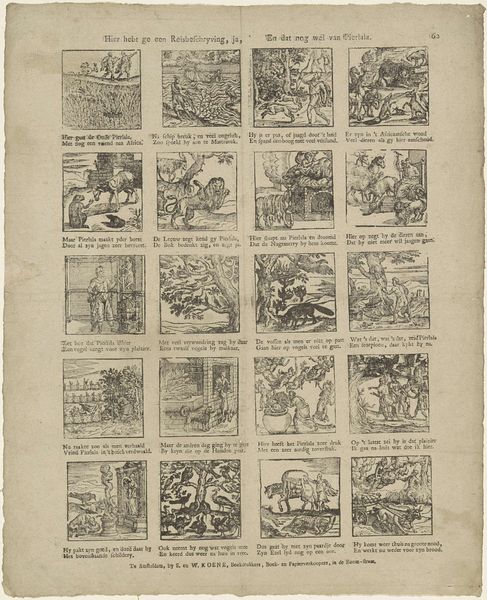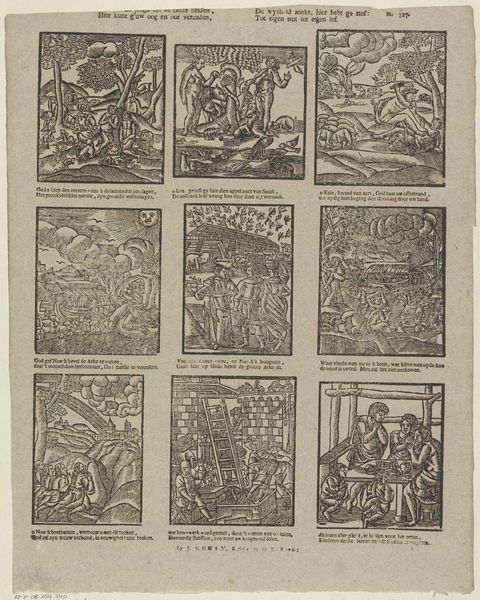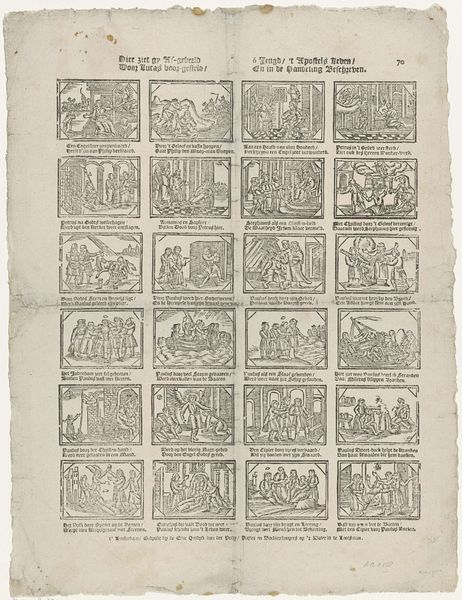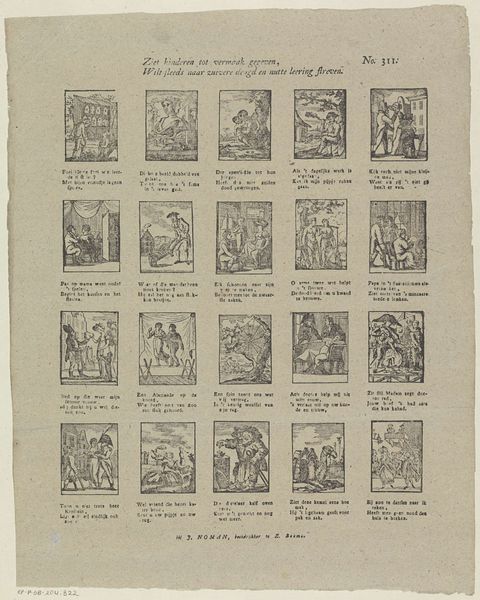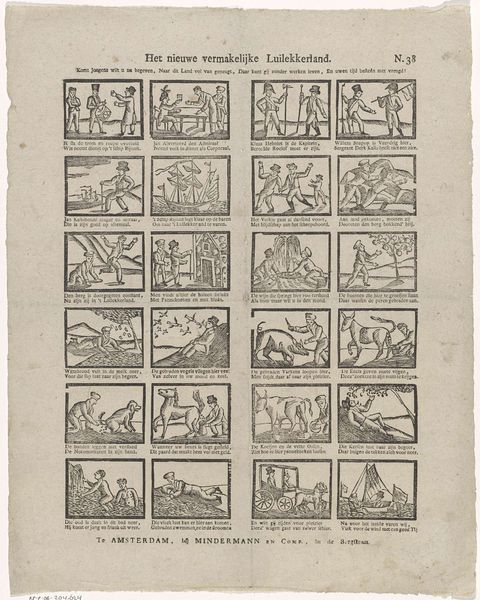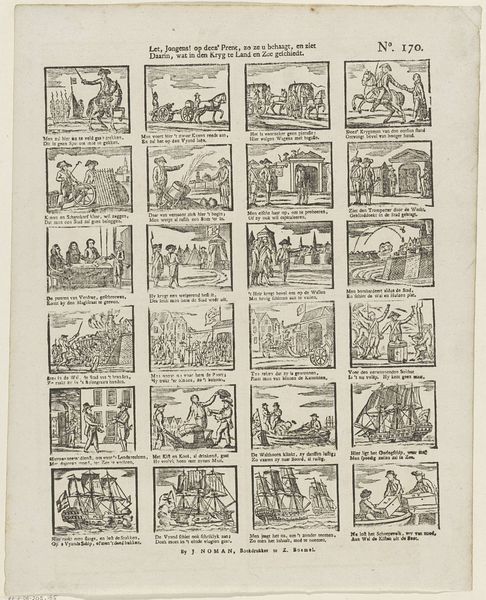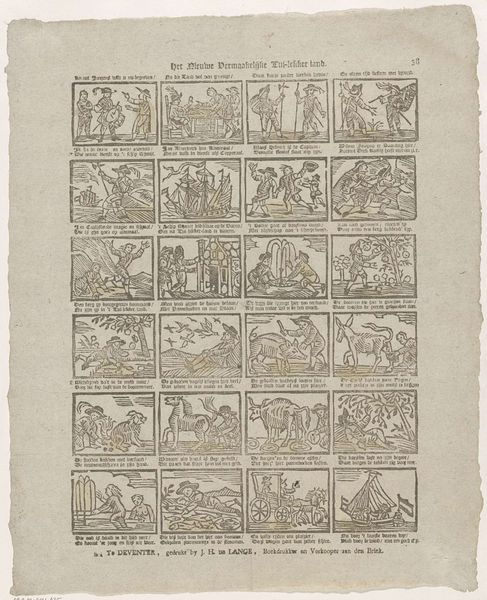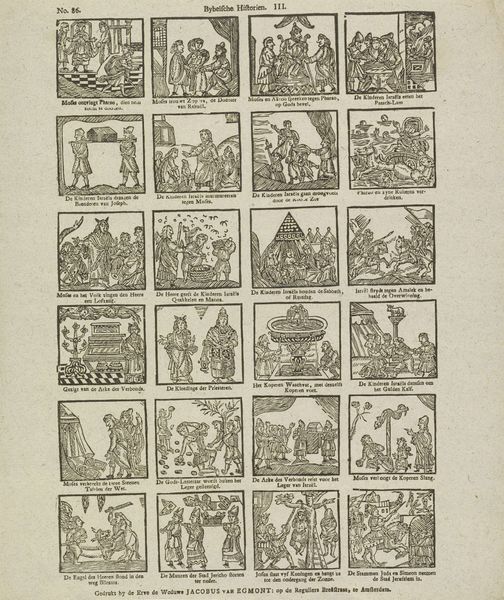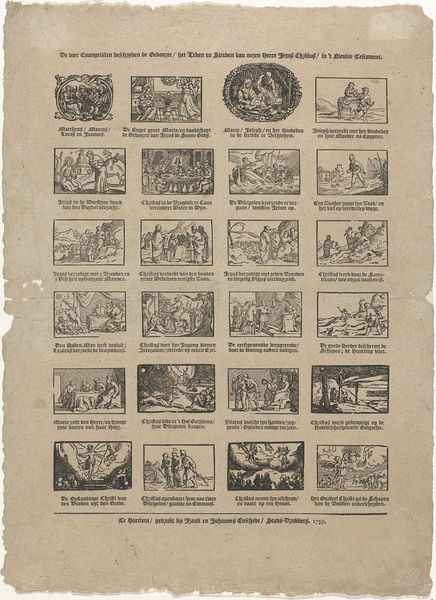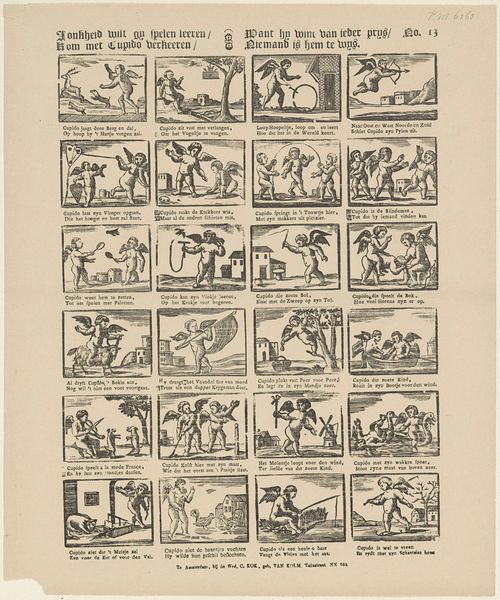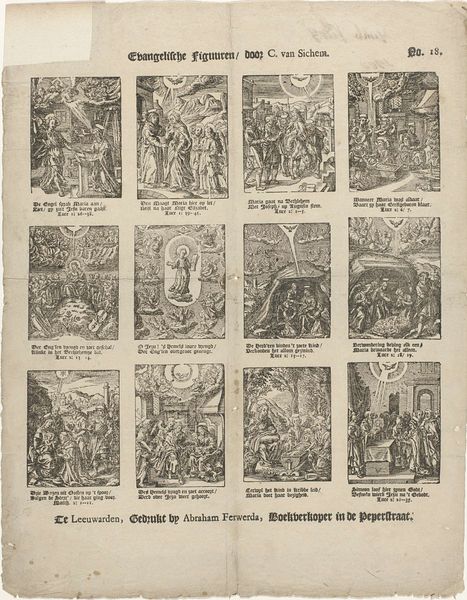
print, engraving
#
aged paper
#
light pencil work
#
narrative-art
# print
#
pencil sketch
#
old engraving style
#
sketch book
#
personal sketchbook
#
folk-art
#
pen-ink sketch
#
pen work
#
sketchbook drawing
#
history-painting
#
sketchbook art
#
engraving
Dimensions: height 399 mm, width 317 mm
Copyright: Rijks Museum: Open Domain
Curator: This engaging print, "Bybelsche zinnebeelden," from sometime between 1806 and 1830, comes to us from Johan Noman and resides at the Rijksmuseum. What strikes you initially about its composition? Editor: It feels like a collection of snapshots, almost like a storyboard ripped from a much larger narrative. The stark contrasts created by the engraving style certainly lends it a dramatic air. Curator: Precisely! The engraving, with its deliberate use of line and shadow, directs the eye through each individual scene, creating a rhythm of looking and understanding. Consider the visual weight given to certain figures through the density of lines, highlighting key characters in each miniature drama. Editor: Each of these scenes is laden with symbolism, referencing Biblical narratives. The depiction of struggle, sacrifice, or divine intervention clearly draws from a shared cultural memory. I see elements recurring in multiple scenes - trees, dwellings, groupings of people - which help unify these separate moments as if part of a cohesive biblical realm. Curator: Yes, Noman's control over composition ensures legibility even in these small formats. The deliberate arrangement of figures, architectural details, and landscape elements guides the viewer through the narratives. The medium itself contributes to the symbolic weight. Engravings, historically, conveyed truth and authority. Editor: Indeed, and there’s a deliberate archaism to the style that would have resonated with a particular view of religious tradition and biblical history. The figures may be simplified but their gestures and postures evoke a timeless quality. What kind of emotional effect do you suppose Noman hoped to create? Curator: That is where personal subjectivity and historical perspective complicate the issue, don't you think? Formalistically, the engraving technique invites a contemplation of detail. Editor: I suspect, though, that Noman wished to evoke awe, and perhaps a sense of moral instruction through familiar and impactful symbolic stories, translated into an accessible visual format. It’s an attempt, perhaps, to materialize the Divine into an understandable form. Curator: A compelling interpretation indeed. This work provides fruitful avenues for aesthetic and cultural exploration. Editor: It certainly does, and reveals how form and iconography interplay to deepen the symbolic reach of the artwork.
Comments
No comments
Be the first to comment and join the conversation on the ultimate creative platform.
